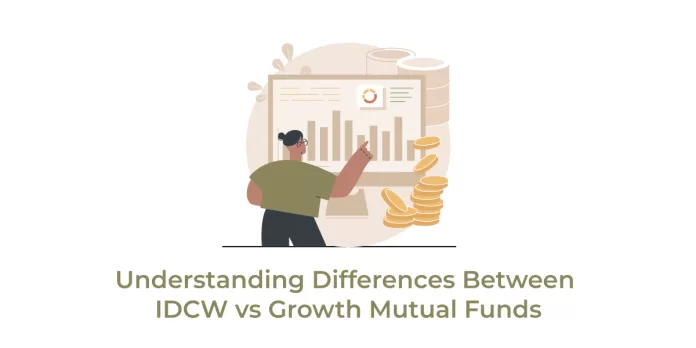Mutual funds offer investors a variety of options to suit their financial goals and preferences. Among these options, Income Distribution Cum Withdrawal (IDCW) and Growth mutual funds stand out as popular choices. Understanding the differences between these two types can help investors make informed decisions about their investments.
IDCW Mutual Funds
IDCW, formerly known as the dividend option, focuses on providing investors with regular income through periodic dividend payouts. These dividends are sourced from the profits earned by the mutual fund and are distributed at predetermined intervals, such as monthly, quarterly, or annually. IDCW funds typically invest in dividend-yielding stocks, often from large-cap or blue-chip companies with a track record of consistent dividend payments.
Growth Mutual Funds
Growth mutual funds, on the other hand, prioritize long-term wealth accumulation and capital appreciation. Instead of distributing profits as dividends, these funds reinvest earnings back into the scheme, allowing investors to benefit from compounding returns. Growth funds typically invest in companies with high growth potential, albeit with higher market volatility compared to IDCW funds.
Key Differences
Let’s see the disparities between IDCW and Growth mutual funds:
| Features | IDCW | Growth |
| Profits | Paid out to investors as periodic dividends | Reinvested in the scheme for long-term growth |
| NAV | Decreases after dividend payouts | Increases over time due to reinvestment |
| Taxation | Dividend income taxed as per investor’s slab | Capital gains tax on profits upon redemption |
| Total Returns | Lower due to periodic dividend payouts | Higher due to compounding and reinvestment |
| Suitability | Investors seeking regular income streams | Investors focused on long-term wealth creation |
Example Illustration
Consider a mutual fund with an initial NAV of Rs. 10 on April 1, 2023, and an investment amount of Rs. 10,000 for 1,000 units:
IDCW Plan: If a dividend of Rs. 5 is declared on March 31, 2024, the investor receives Rs. 5,000 in dividends, with the NAV decreasing to Rs. 10 post-dividend. The total investment value would be Rs. 5,000.
Growth Plan: Without any dividends, the NAV will increase to Rs. 15 by March 31, 2021, resulting in a total investment value of Rs. 15,000.
Choosing the Right Plan
Deciding between IDCW and Growth plans hinges on investors’ financial objectives and risk tolerance. While IDCW suits those seeking regular income, Growth plans are ideal for long-term wealth creation through compounding. Investors should also consider tax implications and potential exit loads when switching between plans.
In conclusion, both IDCW and Growth mutual funds offer distinct benefits, catering to diverse investor needs. By aligning investment choices with financial goals and risk profiles, investors can optimize their portfolio performance over time. Consulting with a financial advisor and leveraging resources like mutual fund screeners can further aid in selecting suitable investment options.
Ready to watch your savings grow? Try our SIP Calculator today and unlock the potential of disciplined investing. Perfect for planning your financial future. Start now!
Disclaimer: This blog has been written exclusively for educational purposes. The securities mentioned are only examples and not recommendations. The information is based on various secondary sources on the internet and is subject to change. Please consult with a financial expert before making investment decisions.


